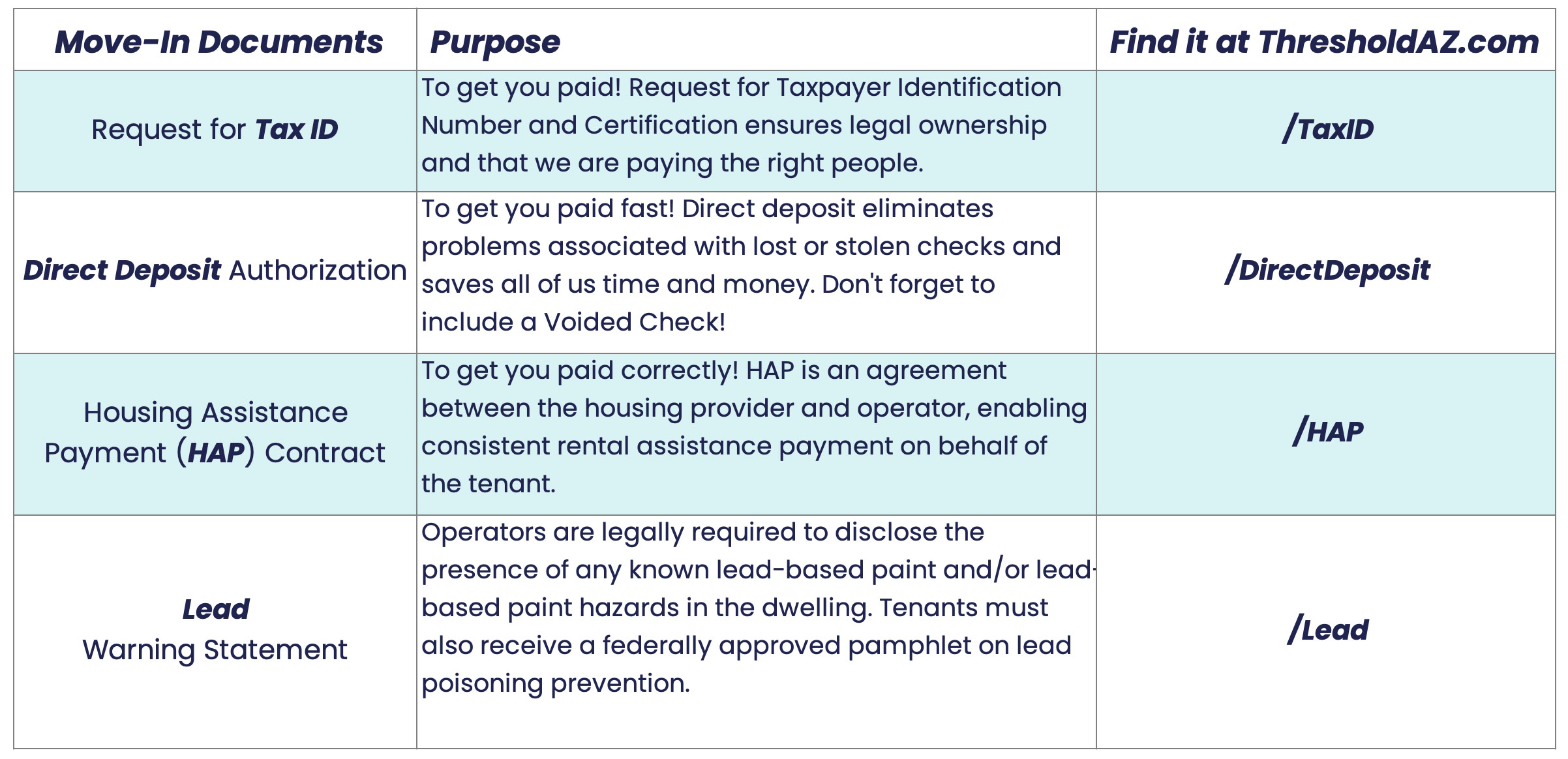For property owners and operators partnering with Threshold, the Damage Claim and Vacancy Loss Worksheet is the key tool for accessing support from the Threshold Risk Mitigation Fund—a vital financial safety net. This fund helps cover unexpected costs when a tenant moves out and leaves damages or unpaid charges that exceed the security deposit.
By accurately completing the worksheet, owners and operators can request reimbursement for eligible losses, helping to ensure continued financial stability while providing housing to tenants transitioning from homelessness. In this blog, we walk through the step-by-step process of filing a damage claim—from gathering documentation to submission and reimbursement—so you can navigate the process with confidence.
Understanding Threshold’s Risk Mitigation Fund
The Threshold Risk Mitigation Fund is a central component of our partnership with property owners and operators. Administered by HOM, the fund provides reimbursement of up to one month’s contract rent for tenant-caused damages or vacancy loss.
This support is designed to complement industry-standard practices such as requiring renter’s insurance or maintaining landlord insurance, as outlined in the Arizona Residential Landlord and Tenant Act (ARLTA).
By offering this financial protection, Threshold empowers property partners to lease units to individuals transitioning out of homelessness— supported by our risk mitigation fund.

We’ve made filing a damage claim easy for property owners and operators.
Overview of the Damage Claim Worksheet
The Damage Claim and Vacancy Loss Worksheet is a two-page fillable PDF, allowing property owners and operators to input information digitally for convenience. The form must be submitted to damageclaims@hominc.com within 30 days of the move-out inspection.
The worksheet has six parts:
- Owner and Tenant Information – Includes details such as names and addresses of the landlord and tenant.
- Security Deposit Disposition – Lists charges, including unpaid rent, damages, cleaning costs, legal fees, lease cancellation fees, or other expenses, with designated sections for specific amounts. Third-party estimates or receipts must be attached.
- Damage Claim – Specifies damages exceeding the security deposit.
- Vacancy Loss Claim – Details losses from unexpected tenant departure, requiring proof of re-leasing efforts.
- Owner Certification – Requires “Yes” answers to all questions regarding ARLTA compliance and documentation. A signature and date from the owner or representative is required here.
- Note to Owner – Indicates that processing may take up to 30 days and is subject to available funding.
Step-by-Step Guide to Filing a Damage Claim
The following steps outline the process for filing a damage claim:
Request a Move-Out Inspection
Property owners and operators must notify HOM within two business days of regaining possession of the unit to schedule a move-out inspection. This inspection, conducted by HOM, documents tenant-caused damages and is required for claim eligibility. (Property owners and operators must then submit the damage claim within 30 calendar days of the HOM move-out inspection.)
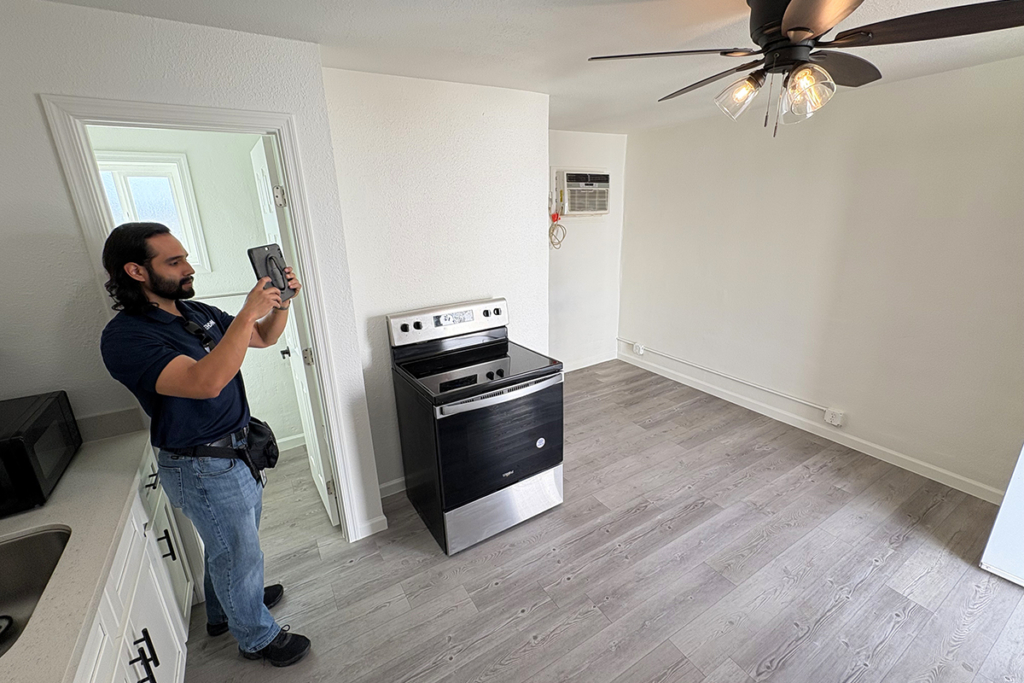
Always schedule your home inspection within two business days of regaining possession of the unit.
Complete the Security Deposit Disposition
As per Arizona Revised Statutes (ARS) 33-1321, property owners and operators must submit an itemized security deposit disposition within 14 working days. This should detail charges and any refund owed, indicating whether HOM or the tenant paid the deposit to determine the refund recipient.
Gather Supporting Documentation
Property owners and operators must collect third-party estimates or receipts for damages, tenant ledgers for unpaid rent, lease copies for cancellation fees, and proof of re-leasing efforts (e.g., leasing reports or advertisements) for vacancy loss claims. All documentation must match the amounts claimed on the form.
Complete the Damage Claim Form
In Part II of the Damage Claim and Vacancy Loss Worksheet, property owners and operators list specific charges. These may include unpaid rent, repair costs, or cleaning fees. Accuracy is essential.
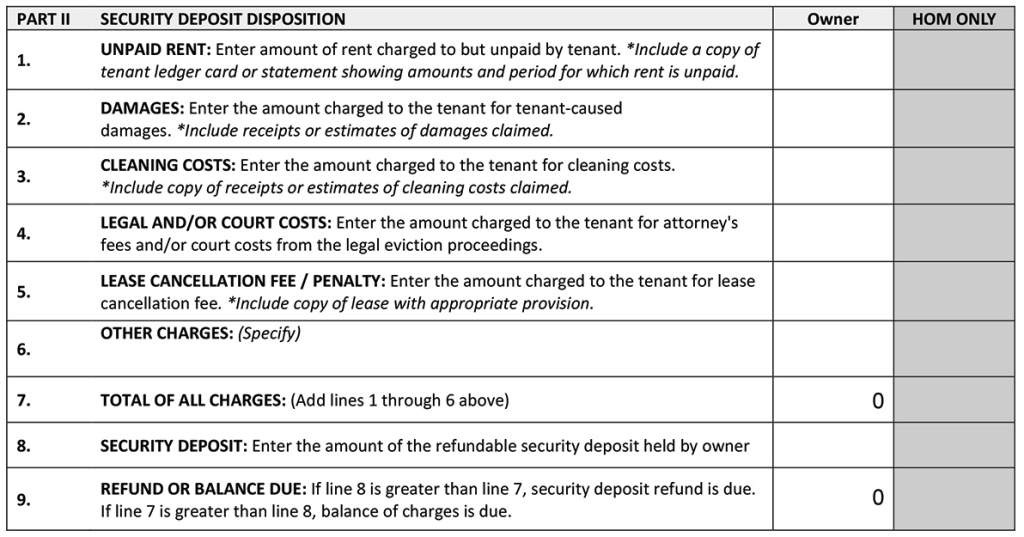
Tally your deductions in Part II of the Damage Claim and Vacancy Loss Worksheet.
Part III addresses damages exceeding the security deposit, while Part IV calculates vacancy loss for unexpected lease terminations.

Damages that exceed the security deposit should be listed in Part III.
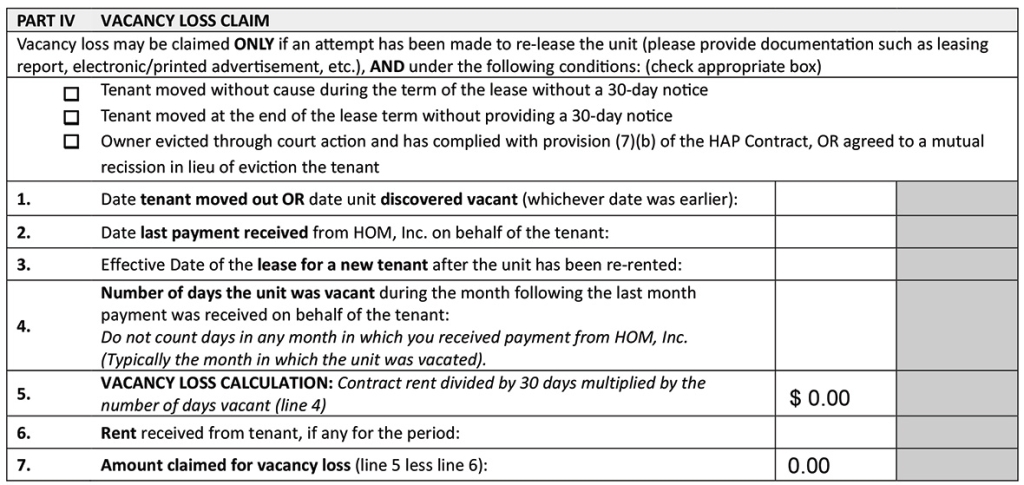
Part IV of the worksheet covers vacancy loss.
Part V requires “Yes” answers to certify compliance with ARLTA and submission requirements.
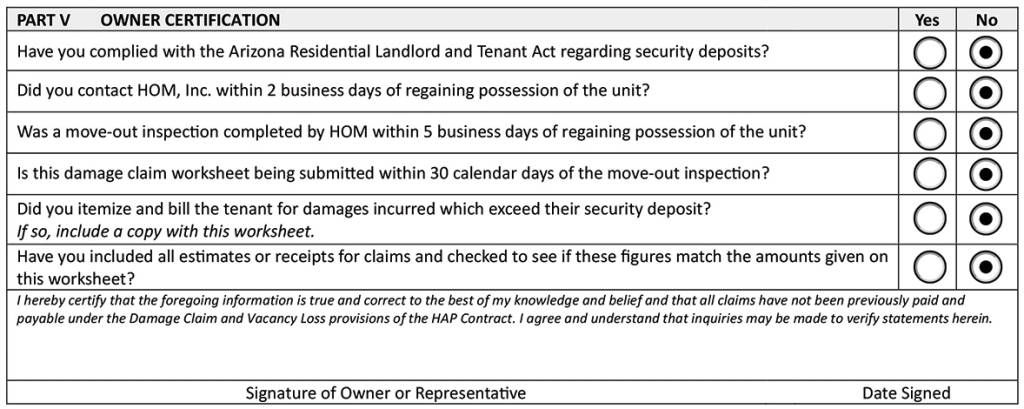
You must agree with all of the statements in Part V of the worksheet.
Submit the Form
Property owners and operators must email the completed form and all documentation to damageclaims@hominc.com within 30 days of the move-out inspection. Late submissions may not be processed.
Await Processing and Payment
HOM verifies the claim within 60 days, reimbursing approved amounts via the preferred payment method (e.g., direct deposit or check).
By following these steps, property owners and operators can efficiently access Threshold’s financial support, ensuring properties remain viable while aiding community housing efforts.
Tips for a Successful Damage Claim
To maximize efficiency and ensure prompt reimbursement, property owners and operators should consider the following tips when filing a damage claim with Threshold:
Ensure Accuracy
Verify that all amounts listed in the Damage Claim and Vacancy Loss Worksheet match the attached documentation. Discrepancies between estimates, receipts, and claimed figures can delay processing or result in claim denial.

Inconsistencies between estimates, receipts, and the amounts claimed may lead to processing delays or denial of the claim.
Adhere to Deadlines
Notify HOM within two business days of unit possession to schedule the move-out inspection and submit the completed form within 30 calendar days of the inspection. Timeliness is critical to eligibility.
Provide Comprehensive Documentation
Include clear, itemized third-party estimates or receipts for damages, tenant ledgers for unpaid rent, and proof of re-leasing efforts (e.g., advertisements or leasing reports) for vacancy loss claims. Incomplete documentation may hinder approval.
Understand Vacancy Loss Requirements
For vacancy loss claims, demonstrate efforts to re-lease the unit, such as listing on Padmission or other platforms, to meet eligibility criteria.
Seek Assistance
Contact your dedicated Landlord Support Specialist or email damageclaims@hominc.com for guidance on complex claims or clarification on requirements.
Leverage Threshold Resources
Review additional information on the move-out process and risk mitigation support to ensure compliance and streamline the process.
By applying these strategies, property owners and operators can navigate the claim process smoothly, securing financial protection while maintaining their commitment to housing solutions in Arizona.
A Better Arizona
Filing a damage claim with Threshold empowers property owners and operators to protect their investments while supporting stable housing for tenants in Maricopa County. The Damage Claim and Vacancy Loss Worksheet is backed by our risk mitigation fund. It provides a clear and efficient path to reimburse expenses like repairs or unpaid rent. This process helps ensure your financial security. By participating in Threshold, property owners and operators not only safeguard their properties but also contribute to a stronger Arizona, one home at a time.
We are grateful to Maricopa County, AHCCCS, and HUD for providing the funds that make these risk mitigation funds possible. And we’re here to support you every step of the way.













